Chemical weapons are among the most feared tools of modern warfare due to their devastating effects on both military personnel and civilian populations. Despite international bans, the threat of chemical weapons remains, as they can cause mass casualties and long-term environmental damage. This post outlines the primary categories of chemical weapons that pose a significant risk in today’s global conflicts.
Check it out: Tactical Gas Mask
Nerve Agents

Nerve agents are among the deadliest chemical weapons, designed to disrupt the normal function of the nervous system by blocking the enzyme acetylcholinesterase. This inhibition leads to an overload of acetylcholine in the body, causing uncontrollable muscle contractions, paralysis, and, ultimately, respiratory failure.
- Sarin (GB): A fast-acting, volatile nerve agent that can cause widespread casualties in a short time.
- VX: A highly persistent nerve agent that remains lethal on surfaces, making it effective for long-term area denial.
- Novichok Agents: An advanced series of nerve agents, more toxic and difficult to detect than older types, designed for maximum lethality.
Blister Agents
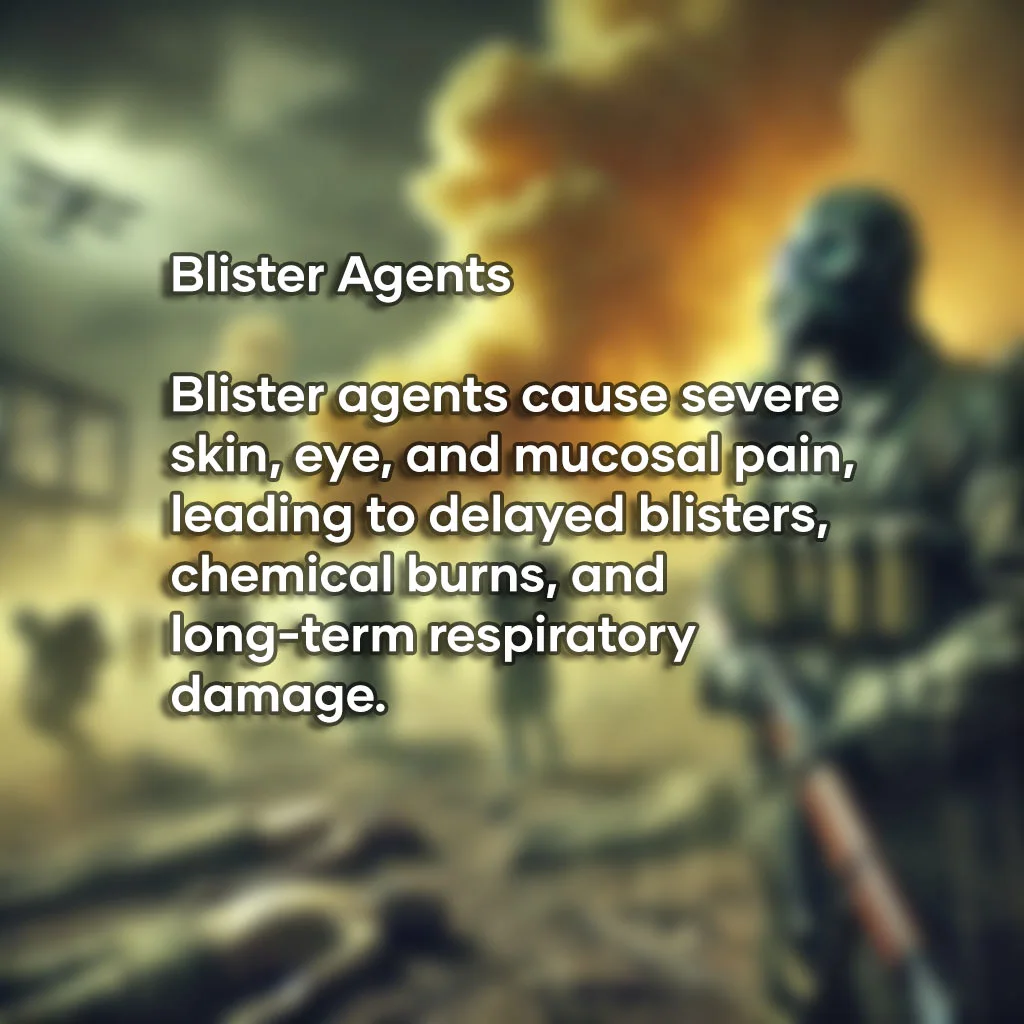
Blister agents, also known as vesicants, cause severe skin, eye, and mucosal pain and irritation. These chemicals are particularly dangerous because their effects are often delayed, leading to severe blisters, chemical burns, and long-term damage to the respiratory system.
- Sulfur Mustard (Mustard Gas, HD): A notorious agent causing painful blisters and severe respiratory damage, with effects that may take hours to manifest.
- Lewisite: A blister agent that causes immediate pain and irritation, designed to incapacitate rather than kill, though it can be fatal in high doses.
Blood Agents

Blood agents are chemicals that prevent the body’s cells from utilizing oxygen, leading to cellular asphyxiation. They are particularly lethal in confined spaces, as they can quickly lead to unconsciousness and death even in small quantities.
- Hydrogen Cyanide (AC): A rapid-acting agent that disrupts cellular respiration, leading to quick loss of consciousness and death.
- Cyanogen Chloride (CK): A dual-action agent that causes both respiratory irritation and blocks oxygen uptake, making it highly dangerous in enclosed environments.
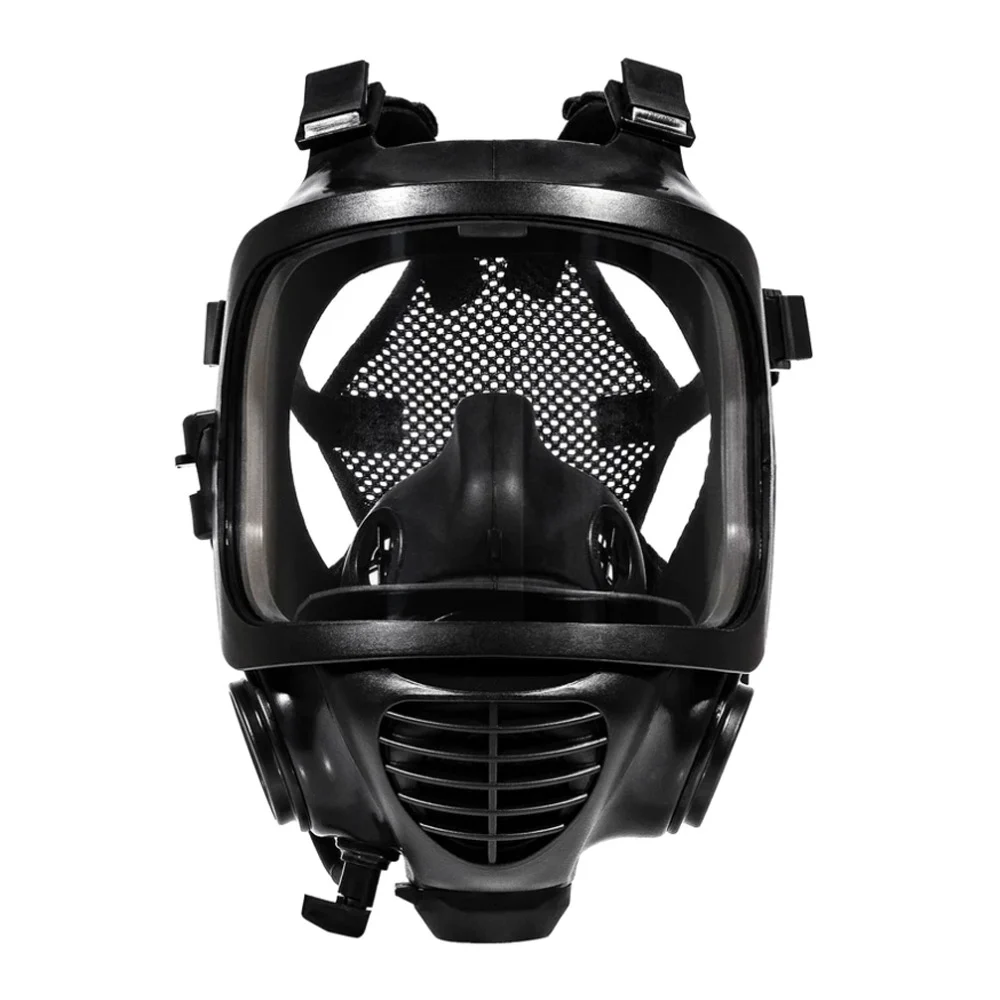
Choking Agents
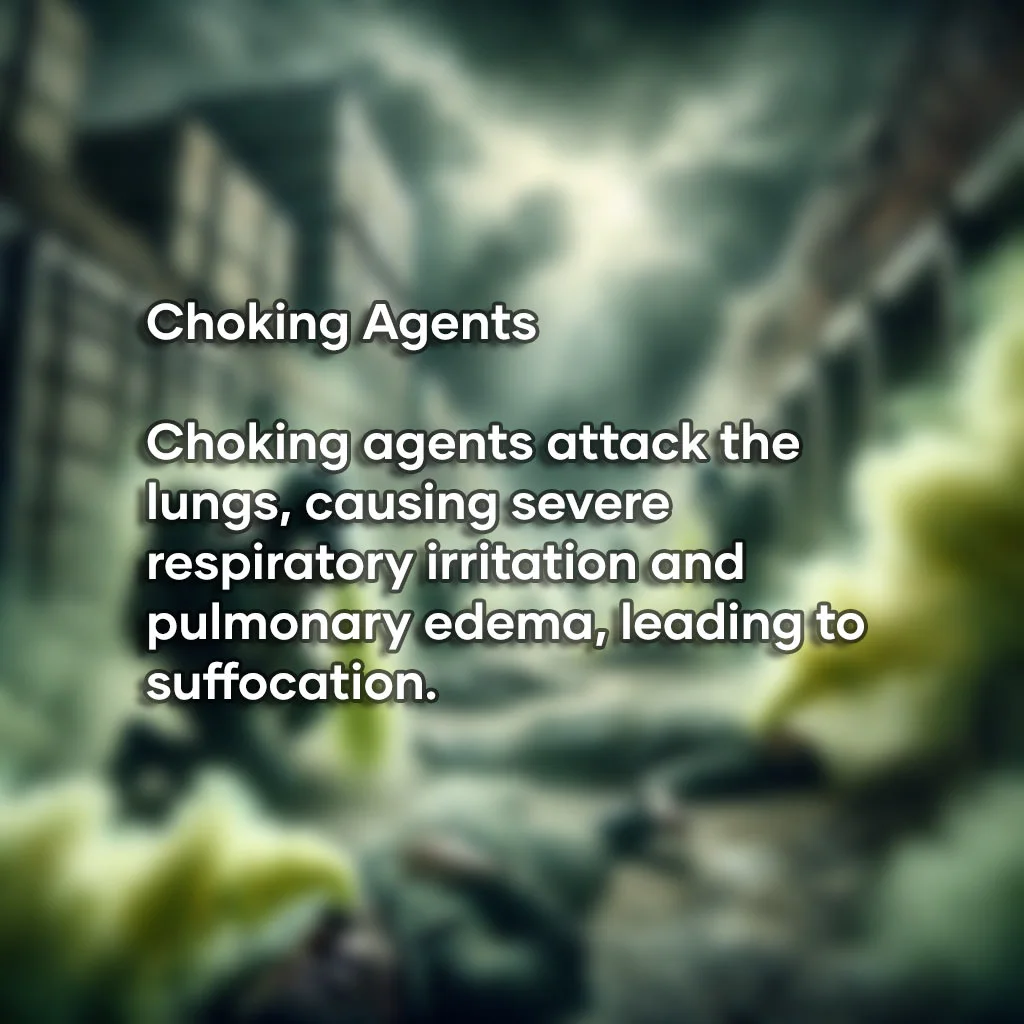
Choking agents primarily attack the lungs, causing suffocation by inducing severe respiratory tract irritation and pulmonary edema. These agents are particularly effective in enclosed spaces, where their effects are magnified.
- Chlorine Gas: Reacts with moisture in the lungs to form corrosive hydrochloric acid, leading to severe damage to the respiratory system.
- Phosgene (CG): More potent than chlorine, phosgene causes delayed but often fatal pulmonary edema, making it a silent yet deadly weapon.
Incapacitating Agents
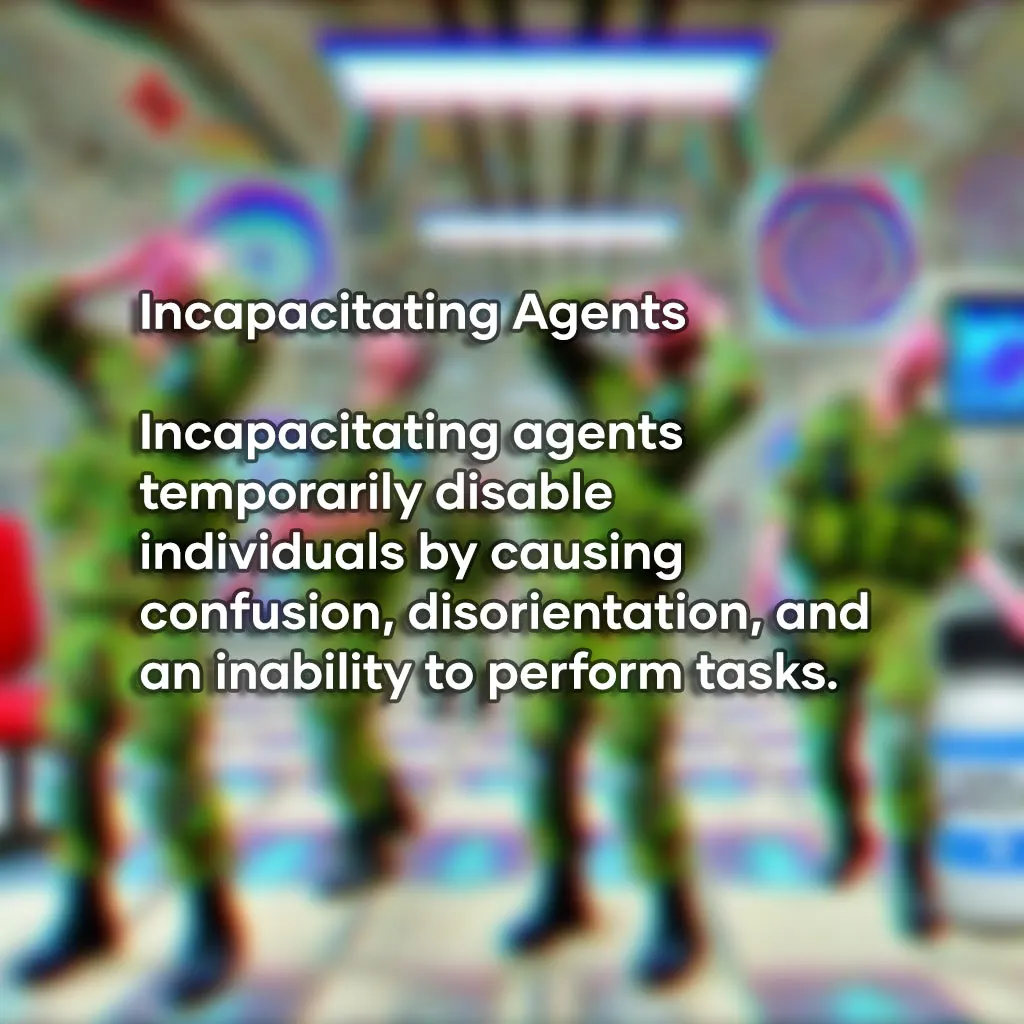
Incapacitating agents are chemicals that temporarily disable individuals, affecting their cognitive and physical abilities. These agents are designed to cause confusion, disorientation, and an inability to perform tasks, without necessarily being lethal.
- BZ (3-Quinuclidinyl Benzilate): A powerful incapacitating agent that causes severe confusion, hallucinations, and disorientation, rendering individuals non-functional for extended periods.
Riot Control Agents
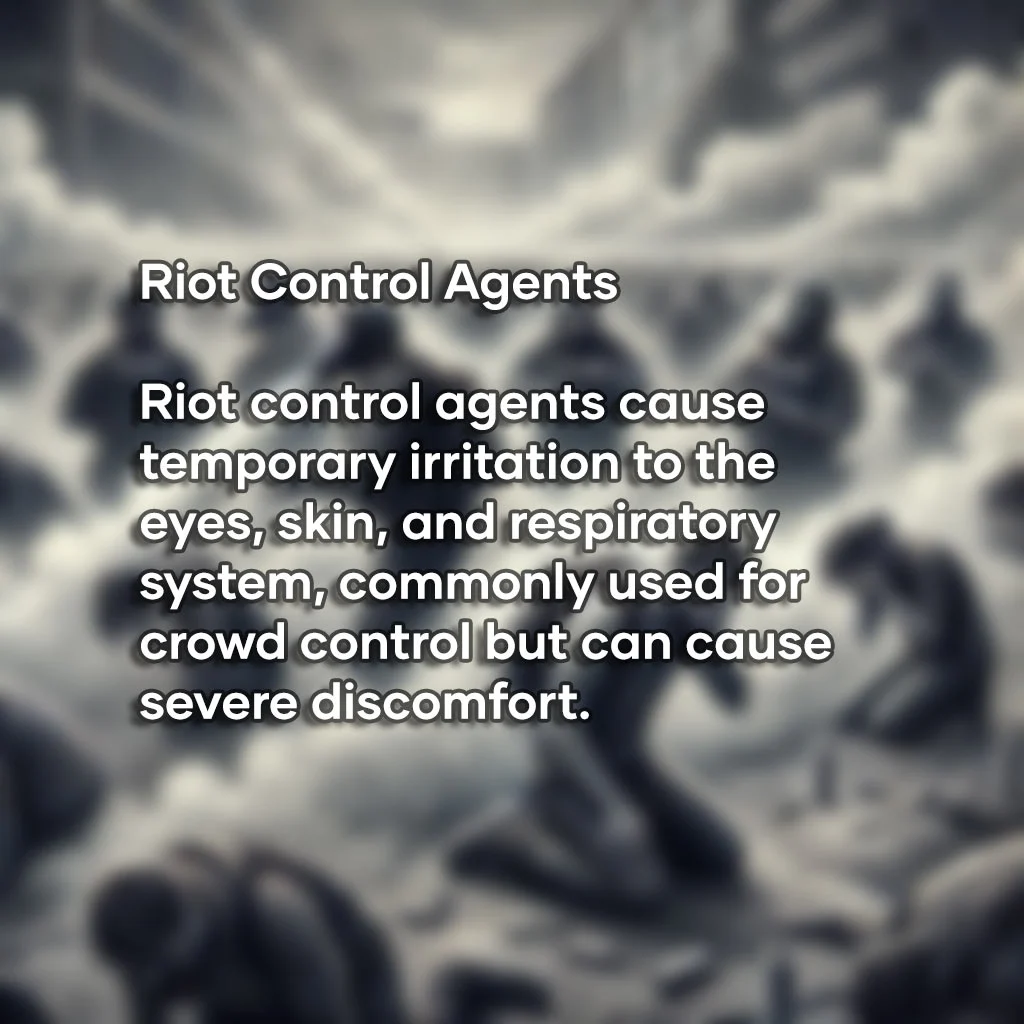
Riot control agents are chemicals used primarily for crowd control, causing temporary irritation to the eyes, skin, and respiratory system. While generally considered non-lethal, they can cause severe discomfort and injury in high concentrations.
- Tear Gas (CS, CN): Causes intense eye irritation, coughing, and respiratory distress, leading to temporary incapacitation.
- Pepper Spray (OC): A potent irritant that causes severe burning sensations on contact with the skin and eyes, commonly used in law enforcement for crowd control.
The continued threat of chemical weapons in modern warfare underscores the need for awareness and preparedness. Each type of chemical weapon poses unique challenges, from the immediate lethality of nerve agents to the long-term incapacitation caused by blister and riot control agents. Understanding these threats is crucial for both military personnel and civilians to mitigate the devastating effects these weapons can have if deployed.
